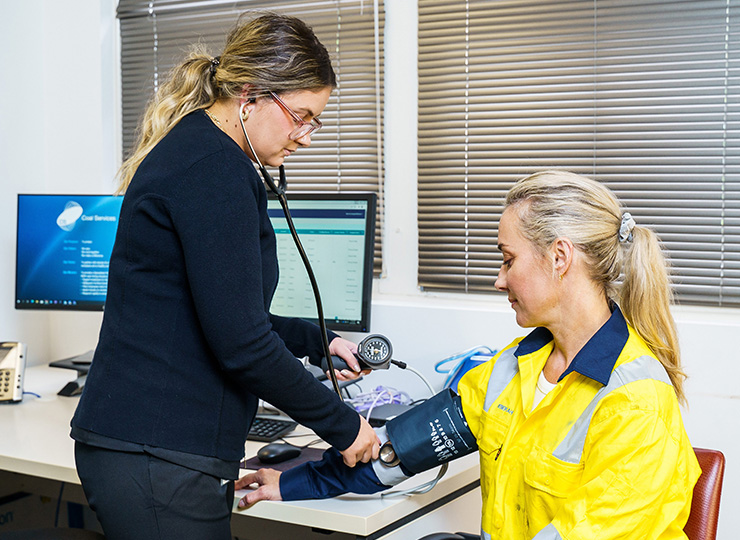Cardiovascular disease (CVD) affects the heart and blood circulation system.
It includes:
- coronary heart disease
- strokes and mini strokes
- heart failure
- peripheral arterial disease (diseases of blood vessels in the legs)
- blood clotting problems.
Common problems such as obesity and high blood pressure can lead to CVD. The risk of CVD can be reduced by improving diet and increasing exercise, as well as reducing smoking and avoiding excessive alcohol consumption. Check out the National Heart Foundation website for more information about how you can help reduce your risk of cardiovascular disease.
Blood pressure
Blood pressure is the pressure of the blood in your arteries as the heart pumps it around your body, and is one of the major health markers. A normal, healthy blood pressure is 120/80. With high blood pressure, such as 140/90 or higher, your heart works much harder and places more stress on your blood vessels.
Long-term high blood pressure can cause serious problems such as heart attacks, strokes, heart failure or kidney disease. Usually there are no obvious warning signs of high blood pressure. The only way to monitor your blood pressure is to have it regularly checked by a doctor.
Fortunately, you can improve your blood pressure by making lifestyle changes such as:
- achieve or maintain your ideal body weight
- be physically active
- limit alcohol intake
- quit smoking
- reduce your salt/sodium intake.
Cholesterol
Cholesterol is an essential type of fat that is made in the liver. It is carried to different parts of the body by certain proteins in our blood called ‘lipoproteins’.
Your body also gets cholesterol from food, which can lead to excess cholesterol in the bloodstream. The main dietary sources are meat and other foods, such as egg yolk, prawns, butter and full cream dairy products.
The good and the bad
Cholesterol is carried throughout the body by two major types of ‘carrier’ lipoproteins:
High-density lipoproteins (HDLs) or good cholesterol – HDL mops up cholesterol from the blood and takes it back to the liver. In this way, it reduces cholesterol and lessens the chance of it being deposited in the arteries. HDLs help protect you from heart disease.
Low-density lipoproteins (LDLs) or bad cholesterol – LDL is the major carrier of cholesterol from the liver to the rest of the body. When cholesterol levels are excessive, LDL deposits cholesterol onto the arteries, which can clog them and lead to heart disease and stroke.
It’s important to note that your ideal cholesterol level varies with your age and general health.
How to reduce your cholesterol:
- eat less animal fats
- choose lean cuts of meat and remove all visible fat
- choose reduced-fat milks
- reduce cheese intake and/or substitute low-fat varieties
- use polyunsaturated margarine instead of butter
- reduce your weight if overweight
- eat skinless chicken
- eat fish such as salmon or tuna
- eat green leafy vegetables and beans
- beware of pies, pasties, fish and chips and commercial cakes
- use polyunsaturated oils to make cakes or cook chips at home.
Share this page

